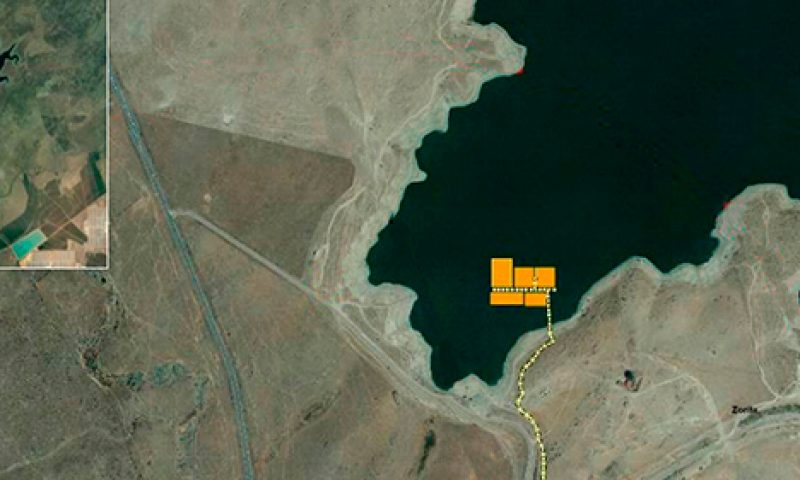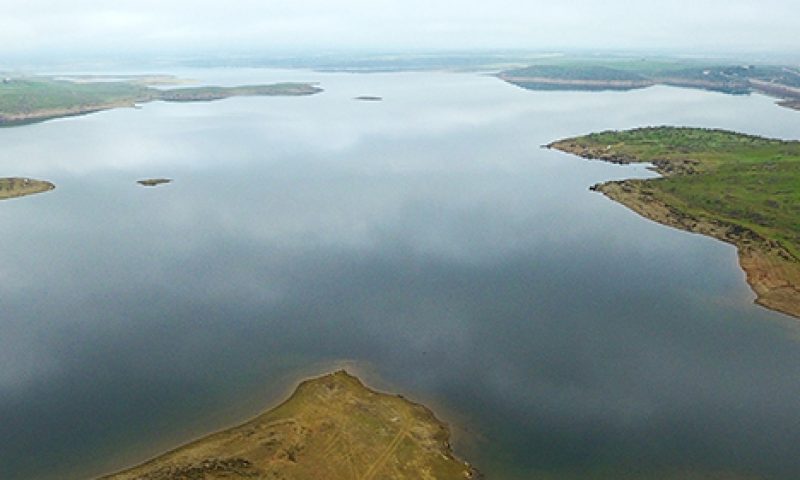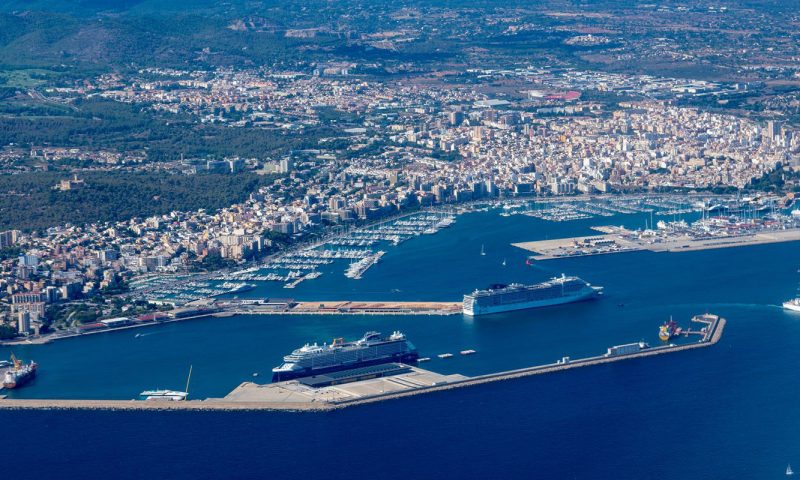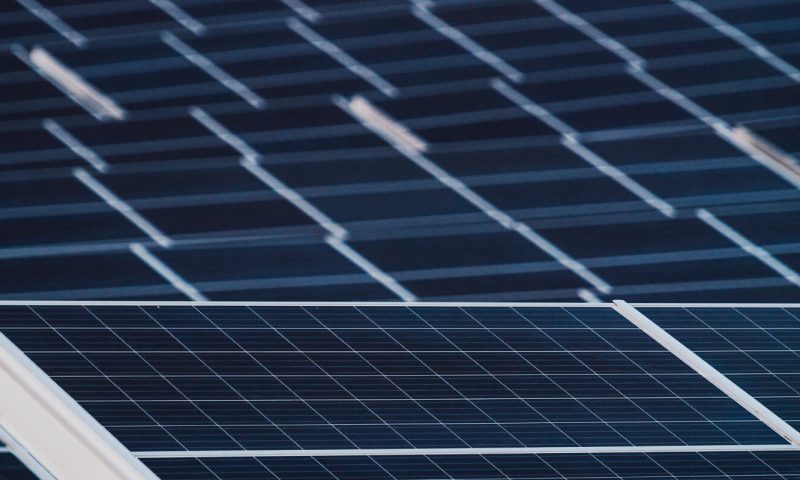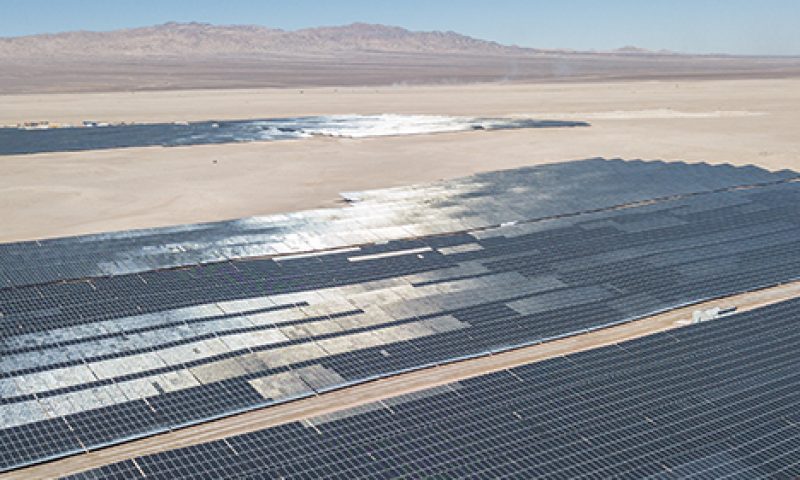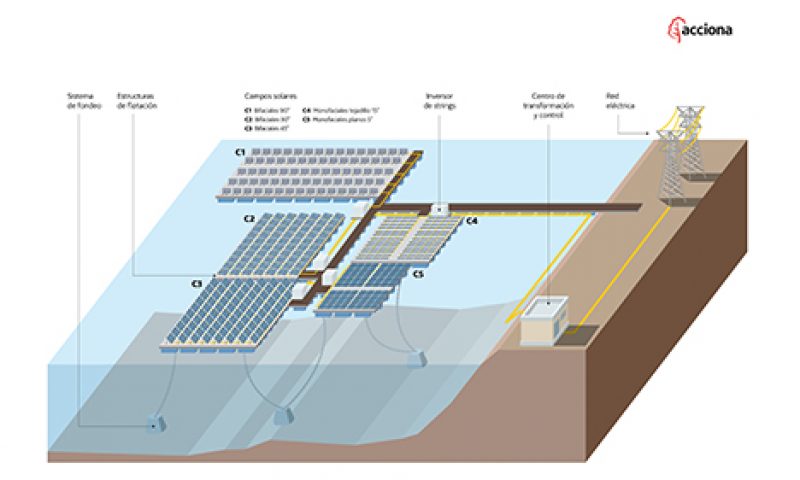
ACCIONA Starts Installing the First Grid-Connected Floating PV plant in Spain
ACCIONA has started building the first grid-connected floating photovoltaic solar plant in Spain, in the region of Extremadura. This initiative is a demonstration project, created with the aim of studying the most suitable technical solutions for the installation of solar panels on lakes and reservoirs. Floating photovoltaic energy is becoming an increasingly popular option in many regions of the world, especially those that do not offer vast amounts of available land or ideal geographical conditions.
The installation, which will be completed by mid-year, is to be located close to the southern shore of the Sierra Brava reservoir, located in Zorita (Cáceres). Sierra Brava is an artificial 1,650-hectare reservoir built in 1996, fed by the waters of the Pizarroso stream. Designed to cover around 12,000m2, the floating solar plant will occupy around 0.07% of the reservoir’s surface area.
“True to our philosophy of being pioneers in the search for advanced, clean and sustainable energy solutions, we are developing a very innovative project to better grasp the commercial development of floating plants. This is especially important in areas where this option proves more suitable than conventional land-based plants, where there may be a lack of land for residential or agricultural use or particular geographical characteristics”, says Belén Linares, Director of Innovation at ACCIONA’s Energy Division.
TECHNOLOGY DEMONSTRATOR
The new floating plant has been conceived as a pilot facility that will contribute to the analysis on the optimization of energy production from this kind of installations. The facility will complement the company’s photovoltaic innovation hub at the El Romero complex in Chile.
The Sierra Brava floating PV plant will study different solar module technologies and configurations in terms of inclination, placing and orientation -among other parameters- together with a variety of flotation structures.
In technical terms, the installation will consist of five adjacent floating systems – supplied by the companies Amilibia Marinas, Isigenere and Stansol- anchored to the bottom of the reservoir and linked to the shore by a jetty. Each system will have 600 photovoltaic panels with an estimated total capacity of 1,125-megawatt peak (MWp).
Each system will be connected to three 60kW inverters that will convert the direct current generated by the panels to alternate current. Each inverter will be connected to a small transformer centre that will rise the low-voltage current (400 V) to medium voltage (22 kV), and from there it will be sent underground along a 1.4-kilomtre power line to the grid connection point.
A small hub will be built to house operation and maintenance services, a control room and a visitor reception area. Another innovative element to be included is a meteorological station that will measure parameters of interest such as solar radiation, temperature, wind speed and direction, relative humidity, air pressure and precipitation. It will be connected to the control hub by fibre optics.
ENVIRONMENTAL MONITORING
The impact studies carried out conclude that the project is compatible with the environmental values of the reservoir. They include measures such as the installation of signage on the natural resources in the area around the reservoir, the installation of marker buoys to mark out the regulatory navigable areas, and the provision of nesting boxes and floating islands to encourage the nesting of certain bird species.
Environmental monitoring will be an important aspect, particularly on birdlife in the area, with the dual aim of protecting birds and studying their interaction with this kind of installation.
The project receives funding from the Spanish Centre for Industrial Technological Development (CDTI).
WHY FLOATING SOLAR PLANTS?
The field of floating photovoltaic plants is now taking off as its technological development demonstrates its technical and economic viability, particularly in regions with low availability of land or where land is used for other purposes such as agriculture.
Furthermore, floating photovoltaic power has other advantages over plants located on land, such as higher performance at lower ambient temperature, the availability of a flat surface with fewer shadows and ease of installation. These factors can end up offsetting the higher initial investment. With respect to the environment, floating photovoltaics have the ability to reduce water evaporation in reservoirs, improving water quality due to a lower rate of growth of algae
This technology is also of interest for hydroelectric power stations, with which it can share electrical infrastructure and improve their management flexibility. It can also be applied in areas with weak power grids.
